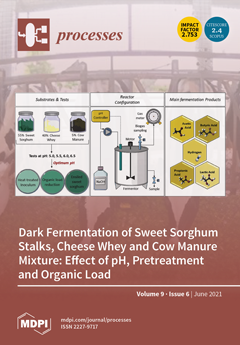The self-learning capabilities of artificial neural networks (ANNs) from large datasets have led to their deployment in the prediction of various physical and chemical phenomena. In the present work, an ANN model was developed to predict the yield sooting index (
YSI) of oxygenated fuels using the functional group approach. A total of 265 pure compounds comprising six chemical classes, namely paraffins (n and iso), olefins, naphthenes, aromatics, alcohols, and ethers, were dis-assembled into eight constituent functional groups, namely paraffinic CH
3 groups, paraffinic CH
2 groups, paraffinic CH groups, olefinic –CH=CH
2 groups, naphthenic CH-CH
2 groups, aromatic C-CH groups, alcoholic OH groups, and ether O groups. These functional groups, in addition to molecular weight and branching index, were used as inputs to develop the ANN model. A neural network with two hidden layers was used to train the model using the Levenberg–Marquardt (ML) training algorithm. The developed model was tested with 15% of the random unseen data points. A regression coefficient (R
2) of 0.99 was obtained when the experimental values were compared with the predicted
YSI values from the test set. An average error of 3.4% was obtained, which is less than the experimental uncertainty associated with most reported
YSI measurements. The developed model can be used for
YSI prediction of hydrocarbon fuels containing alcohol and ether-based oxygenates as additives with a high degree of accuracy.
Full article





